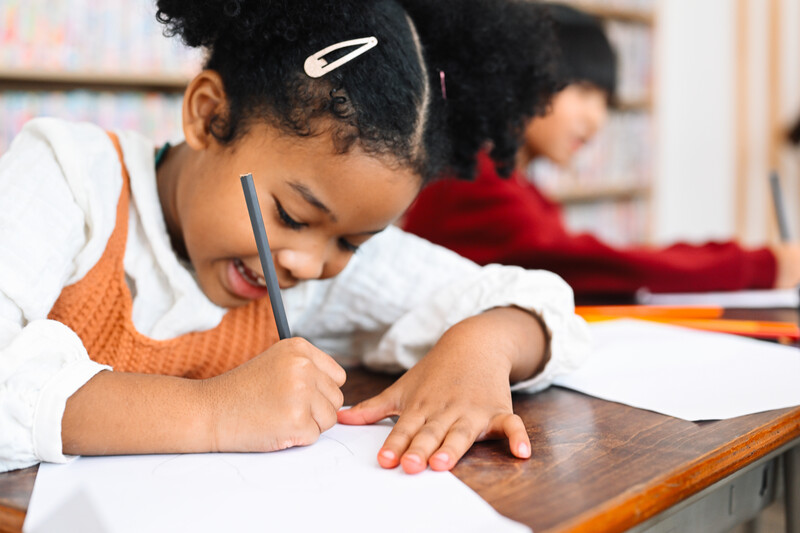For decades, we’ve heard about the “reading wars”—passionate debates about the best way to teach children to read. It’s worth asking why debates about teaching reading often become so fierce they’re termed “wars.” Yet the answer seems obvious: because reading is so important to a child’s success in school and life. As this issue’s title reflects, reading is essential to success in every discipline. Students who don’t read well by 3rd grade tend to do less well academically throughout their school years. I think people get fierce about how to teach reading because they care deeply about children.
Lately, the reading wars have quieted some because of the groundswell of interest in the science of reading, which focuses on the importance of explicit phonics instruction in literacy development and gives less support to certain balanced literacy approaches (as discussed in several articles here).
Reading is essential to success in every discipline.
Another common question is how to strengthen reading and writing in the content areas—how to de-silo literacy instruction. That’s what this issue explores. Zaretta Hammond, for instance, says that all teachers should teach reading in the sense of teaching “how language is used uniquely and specifically in their discipline." She also calls for more nonfiction texts in literacy instruction to build background knowledge. How to improve reading comprehension is a huge question some of these articles tackle. Journalist Natalie Wexler explains that even with solid early instruction in phonics, many kids have problems understanding what they read when they hit upper grades. She believes one reason this happens is that the standard approach to comprehension instruction views comprehension “as a set of skills and strategies.” Students learn each strategy and practice it with texts at their reading level. What’s missing is sustained reading on “meaty topics” to build kids’ background knowledge and familiarity with complex syntax. Researcher Daniel Willingham also gives evidence indicating that while instruction in comprehension strategies helps students understand texts, spending a lot of time practicing those strategies has diminishing returns. Rachael Gabriel’s article addresses what “disciplinary literacy instruction” should look like and how teachers can know if they’re providing it. Such instruction, she asserts, “focuses on how to use content knowledge and skills to work in a specific discipline or act in the world. . . students learn to use texts that are integral to the activities of each discipline or community of people who use that content for a purpose beyond school.” She offers specific questions teachers should ask themselves as they plan lessons with a disciplinary literacy focus. Cris Tovani explores the importance of connecting the texts we ask students to read, and perhaps struggle with, to real situations related to their lives. She shows how to give middle schoolers “reasons to care” about the reading we ask them to do. Michael Hernandez also shows how to infuse engagement, purpose, and fun into literacy instruction through digital storytelling. He describes how creating digital stories helps “connect the curriculum to students’ communities and make connections across disciplines”—while teaching multimedia skills and providing “uncheatable” assessments. We hope these articles will help our readers teach literacy powerfully across all content areas.
Reflect & Discuss
➛ Do you agree with Wexler that reading
comprehension instruction needs to be
more closely brought together with “deep
dives into topics”?
➛ Why do you think building background
knowledge has tended, as Wexler argues,
to be less integral to literacy instruction
than other strategies? Are reading and
writing instruction integrated into your
school curriculum? Or are they siloed as
Wexler warns against?
➛ Describe some successful
strategies you’ve tried for
merging literacy and content
learning.
➛ Does the work you typically
assign position students as
“doers of the discipline”?
➛ How feasible is it for you to
teach with an interdisciplinary
approach?
➛ What might the implications
of the research summarized
here be for how you teach
reading-comprehension
strategies at your school?
➛ For elementary teachers:
Do your students seem to
need guidance in making
inferences or connecting
ideas as they read?
What have you found
helps them do this?
➛ For secondary teachers: What
have you found most helps
guide your students who
struggle in comprehending
what they read?
➛ Think of a unit you will be
teaching soon. How could you
change up your lesson plans
or structure of that unit to add
context and “reasons to care”
for students?
➛ Thinking outside the box, what
supplemental texts could you
use in this unit that would feel
relevant and give access to
readers with various abilities?
➛ How do you tend to answer
the student question, “Why do
we have to do this?” Talk to
other teachers on your team
or a critical friend: What good
ways have they found to
answer this?
➛ How much of a priority
is academic talk in your
classroom or school? Is it
enough?
➛ Evaluate your own methods
of facilitating discussion in the
classroom. Do you open the
conversation or stifle it? How
can you adapt?









